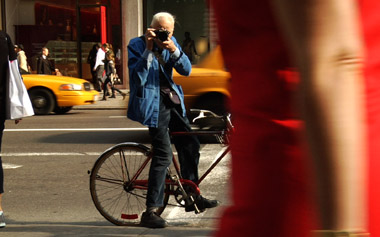The Sundays of my youth were days of tradition. This was mostly thanks to my father, a man fond of tradition and of the family ties that kept those rituals close. When I was born, we lived in an apartment building next door to my grandparents. Almost 40 years and three houses later, the family homestead has never moved farther than three blocks away.
So it was never a long walk, then, when on those Sundays my brother and I would accompany our father on his weekly loop: first to visit a man—his name escapes me now—who sold newspapers out of the side of an open van, and then on a trip to deliver The New York Times to my grandmother, a crossword fanatic who raced to complete the famous “Sunday puzzle” before starting dinner.
Many years later, I would become one of those crossword casualties myself. But at the time, the Times seemed impossibly grown-up: it didn’t even have the funnies, something I felt sure was a printing error. Instead, I tried to understand the editorial cartoons before moving on to browse through the rest of the paper, looking for something—anything—that promised some excitement. It was then that I first stumbled upon Bill Cunningham. I was never bored again.
The subject of the new documentary Bill Cunningham New York, now playing at Pleasant Street Theater, Cunningham wrote the “On The Street” column, an ongoing work of photojournalism that has chronicled the changing art of fashion for over 30 years. Each column pulls together a few dozen photos, united by some detail that Cunningham has sniffed out ahead of the rest of us. (The column is now also available on the Times‘ website in slideshow installments with Cunningham’s charming narration.) But Cunningham is no haute couture or society snob; his democratic eye falls just as often on the daring but unknown New Yorker—one of his favorite recurring subjects, Louise Doktor, is a secretary—who has a sharp eye for an outfit and the necessary verve to pull off wearing it.
Yet Cunningham the man is as retiring as his subjects are eye-catching. Now in his 80s, he came to the city in the late ’40s after dropping out of Harvard. Early stints as an adman and a hat maker didn’t pan out, but Cunningham hit his stride when he landed a job writing for the Chicago Tribune. (One of his early fashion scoops was helping to introduce Jean-Paul Gaultier to American eyes.) Then, in the mid-1970s, a chance snapshot of Greta Garbo led to his first photo collection for the Times, and he was off and running.
He remains a hard man to pin down. Cruising the streets on his favorite bicycle, he’s gone before a society dame can corral him—he’s constantly aware of the pitfalls of getting too close to his subjects. (They adore him anyway.) For the last 50 years, he has lived a quiet life in his apartment above Carnegie Hall, but his ability to capture the wildlife of his urban jungle will always speak loudly. Especially on Sundays.
*
Also this week: Amherst Cinema presents a special screening of The Desert Of Forbidden Art on Thursday, May 5 at 7:30 p.m. A remarkable true story of artistic rebellion, this documentary plays out like a piece of magic realism on a par with Borges or Gabriel Garcia Marquez.
During Russia’s Soviet era, artists who refused to follow the party line could find themselves packed off to mental hospitals, gulags, or worse. Igor Savitsky—himself an artist—came up with an inspired, wickedly devious plan to help support them and preserve their work: he would trick the state into buying it. Eventually, he would amass a cache of some 40,000 works; to house them, he created a secret museum in the desert of Uzbekistan. Worth millions today, the collection is as endangered now—a target of art profiteers and Islamic fundamentalists—as it was when Savitsky first set foot in the desert. On hand to discuss this remarkable museum is Amherst College Professor of Russian Catherine Ciepiela.
Jack Brown can be reached at cinemadope@gmail.com.



